
How to Use SparkFun LiPo Charger Booster-5V1A: Examples, Pinouts, and Specs
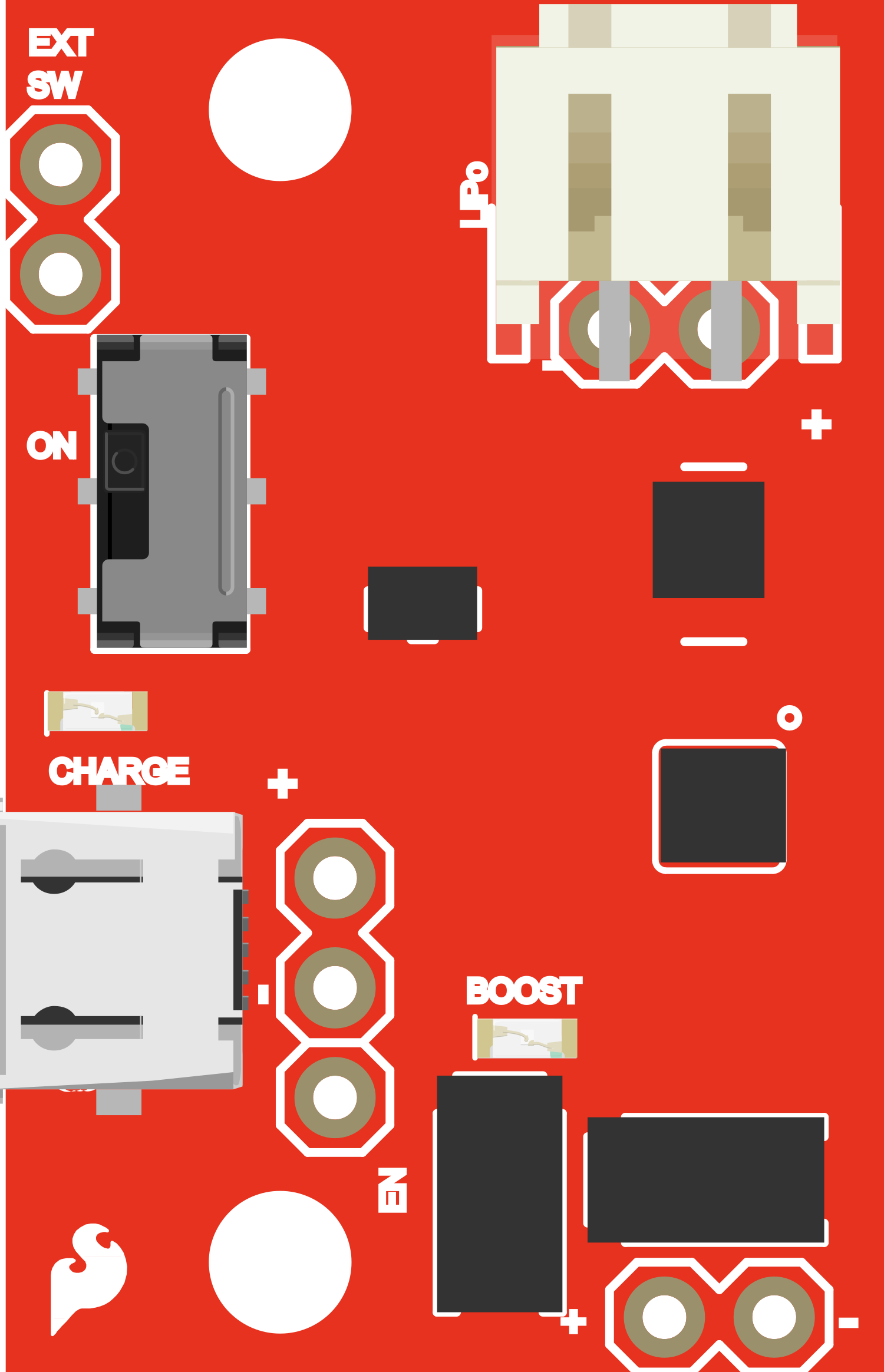
 Design with SparkFun LiPo Charger Booster-5V1A in Cirkit Designer
Design with SparkFun LiPo Charger Booster-5V1A in Cirkit DesignerIntroduction
The SparkFun LiPo Charger Booster-5V1A is a versatile and compact electronic component designed for charging single-cell Lithium Polymer (LiPo) batteries and providing a stable 5V output. This makes it an ideal choice for portable electronics, DIY projects, and any application where a 5V power supply is needed alongside battery charging capabilities.
Explore Projects Built with SparkFun LiPo Charger Booster-5V1A
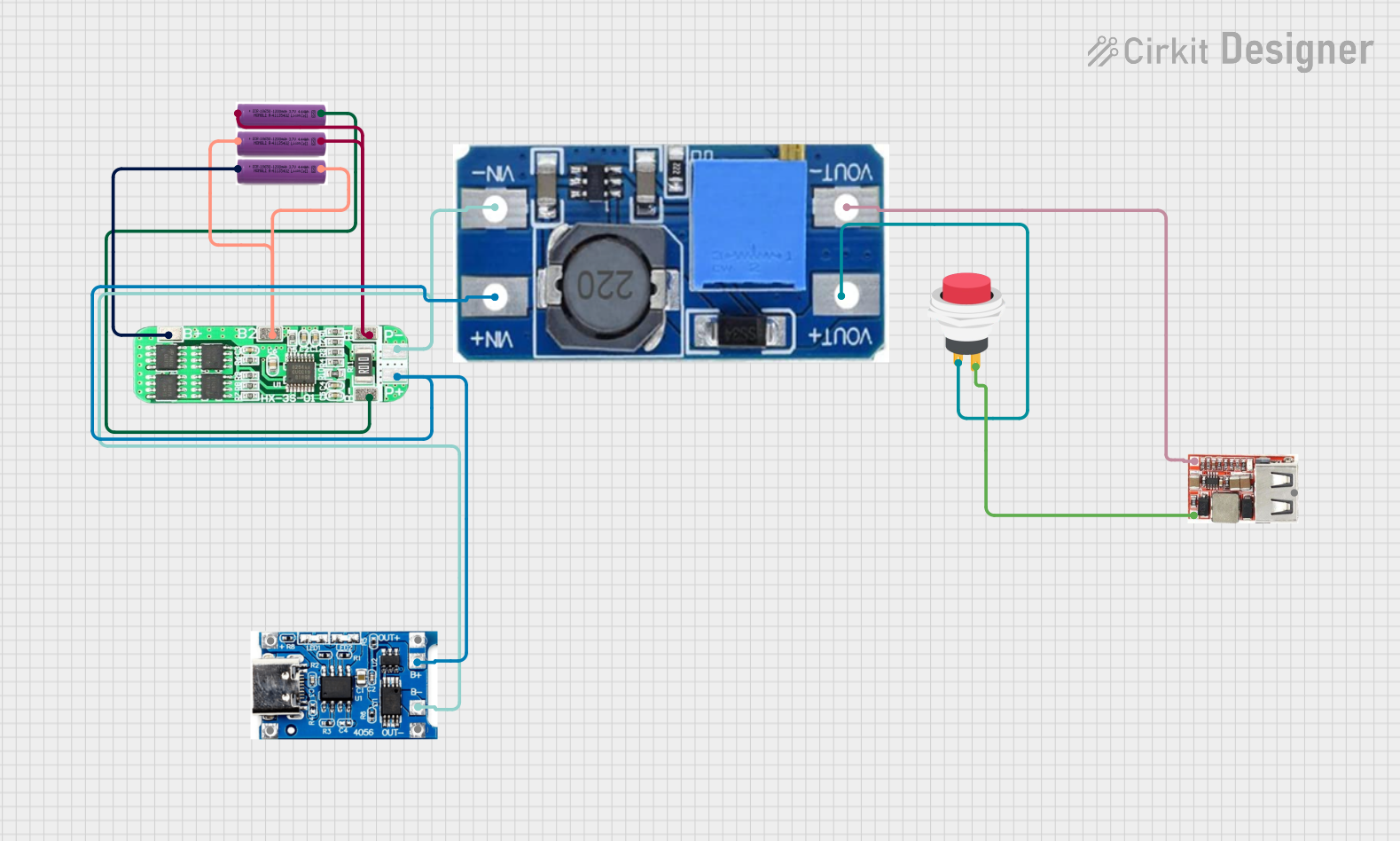
 Open Project in Cirkit Designer
Open Project in Cirkit Designer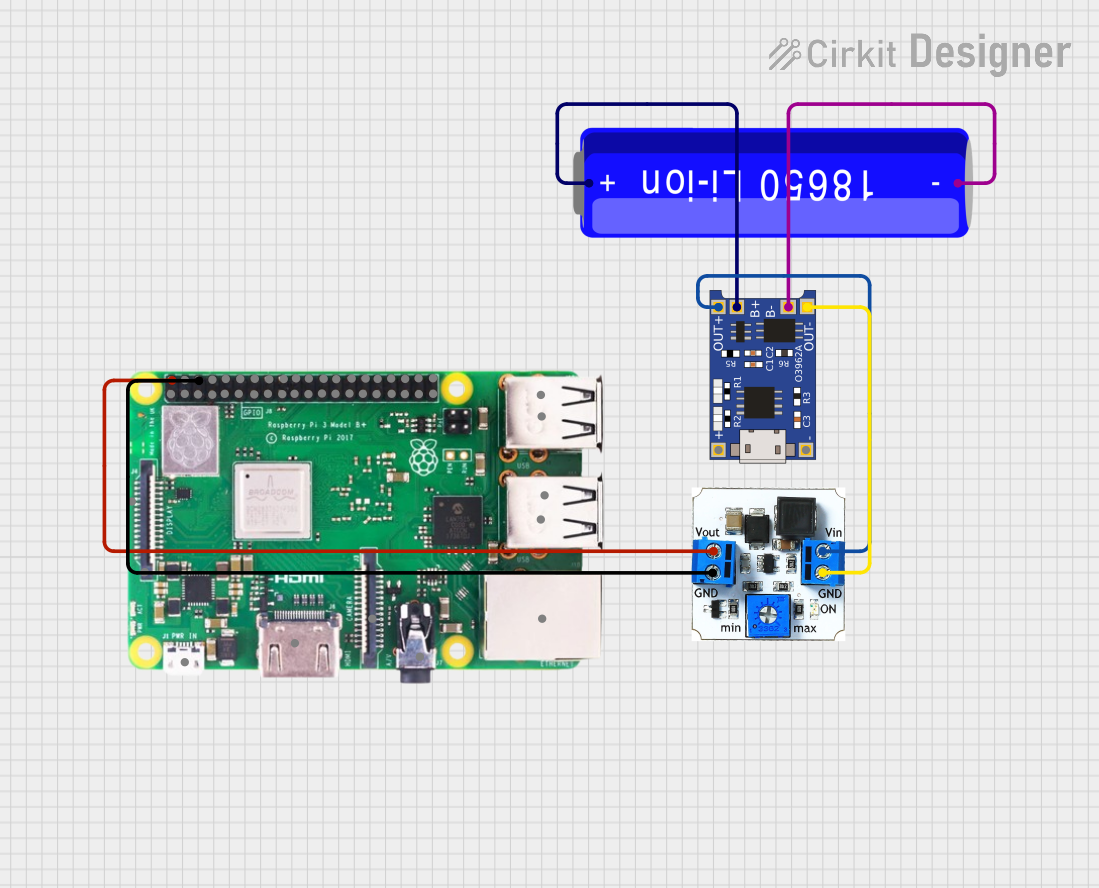
 Open Project in Cirkit Designer
Open Project in Cirkit Designer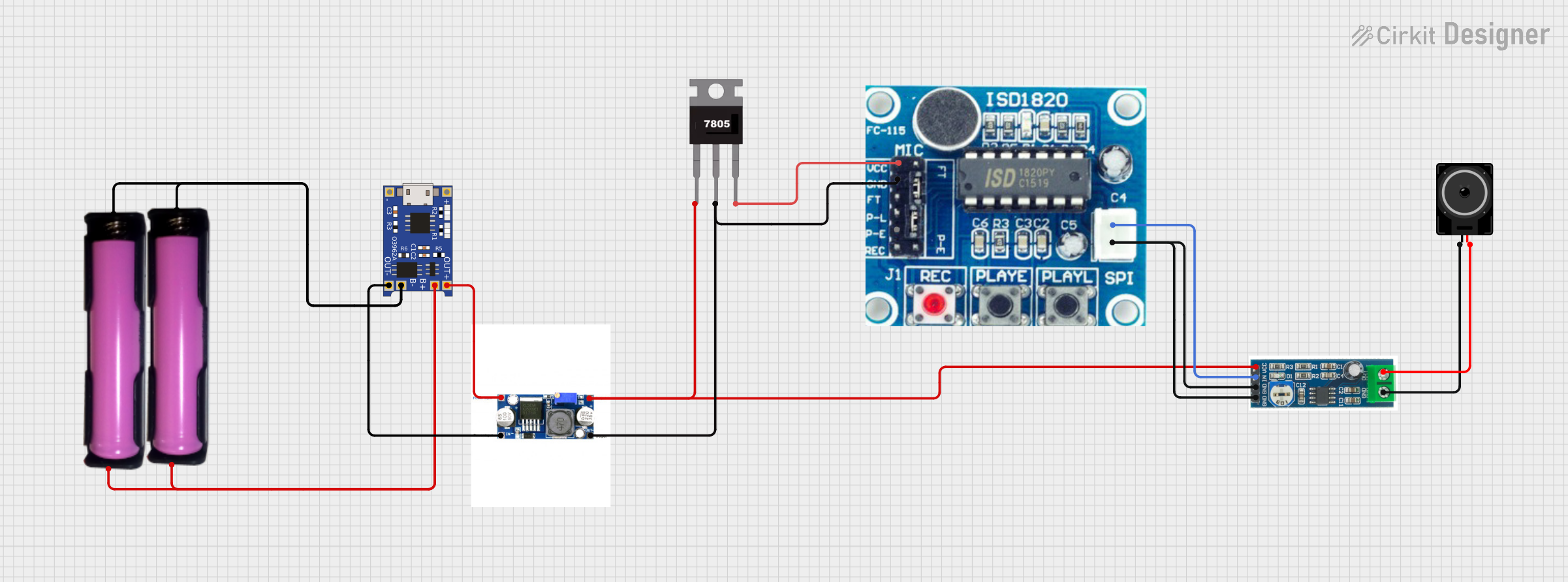
 Open Project in Cirkit Designer
Open Project in Cirkit Designer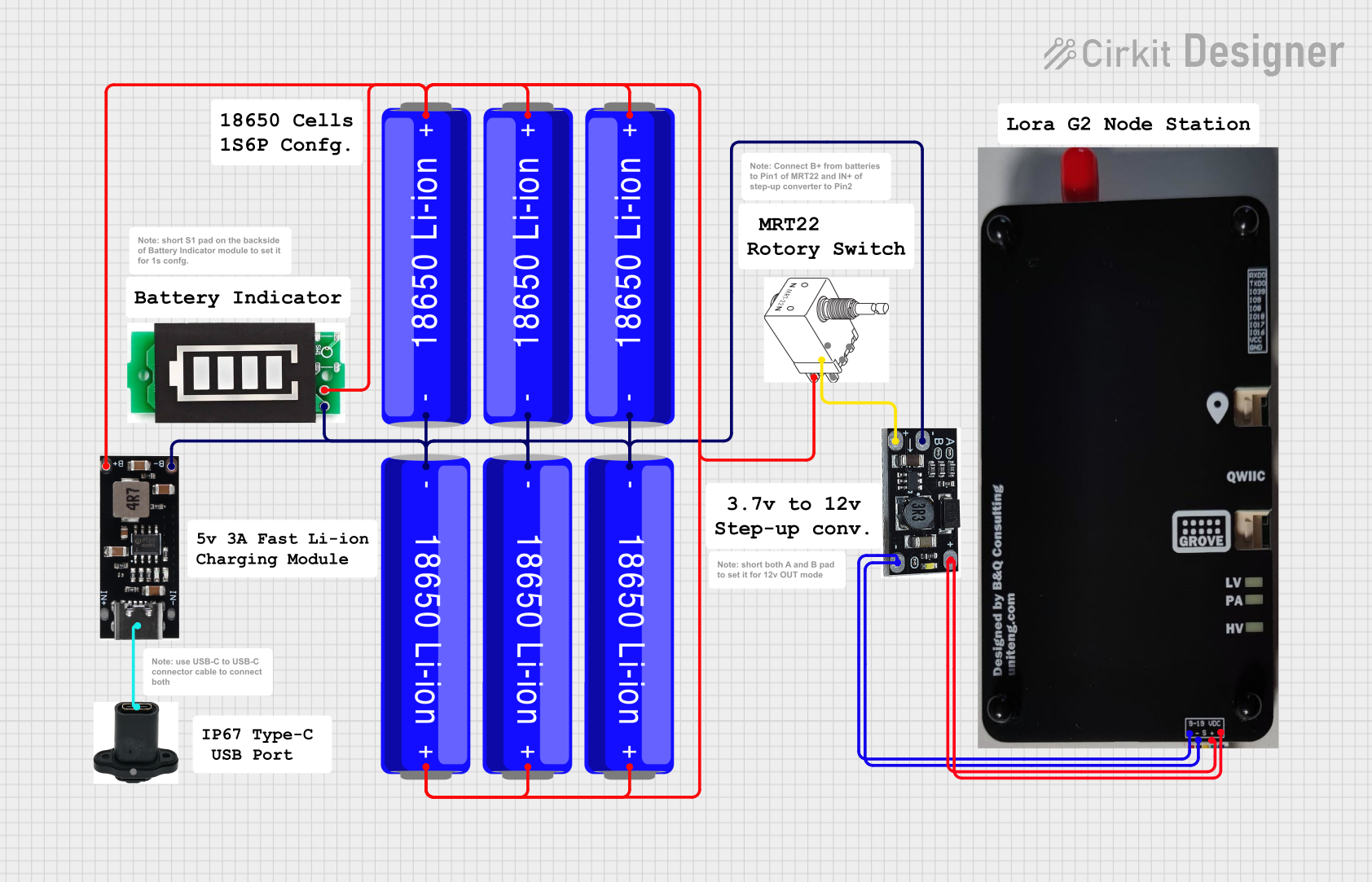
 Open Project in Cirkit Designer
Open Project in Cirkit DesignerExplore Projects Built with SparkFun LiPo Charger Booster-5V1A

 Open Project in Cirkit Designer
Open Project in Cirkit Designer
 Open Project in Cirkit Designer
Open Project in Cirkit Designer
 Open Project in Cirkit Designer
Open Project in Cirkit Designer
 Open Project in Cirkit Designer
Open Project in Cirkit DesignerCommon Applications
- Portable devices and wearables
- DIY electronics projects
- Microcontroller boards power supply (e.g., Arduino)
- Robotics and remote-controlled devices
Technical Specifications
Key Technical Details
- Input Voltage: 3.7V - 5V (from LiPo battery)
- Output Voltage: 5V fixed
- Maximum Charging Current: 1A
- Maximum Boost Current: 1A
- Charging Cutoff Voltage: 4.2V ± 1%
- Efficiency: Up to 95%
- Operating Temperature: -25°C to +85°C
Pin Configuration and Descriptions
| Pin Name | Description |
|---|---|
| BAT | Connection to the positive terminal of the LiPo battery |
| GND | Ground connection |
| USB | Micro USB port for charging the LiPo battery |
| EN | Enable pin for the booster (active high) |
| 5V | Regulated 5V output |
Usage Instructions
How to Use the Component in a Circuit
Connecting the Battery:
- Connect the positive terminal of the LiPo battery to the
BATpin. - Connect the negative terminal of the LiPo battery to the
GNDpin.
- Connect the positive terminal of the LiPo battery to the
Charging the Battery:
- Plug a micro USB cable into the
USBport and connect it to a USB power source.
- Plug a micro USB cable into the
Enabling the Voltage Booster:
- Apply a high signal (3.3V or 5V) to the
ENpin to enable the 5V output. - Alternatively, you can tie the
ENpin to the5Voutput for automatic enablement when the USB is plugged in.
- Apply a high signal (3.3V or 5V) to the
Accessing the 5V Output:
- Use the
5Vpin to power your 5V electronics.
- Use the
Important Considerations and Best Practices
- Ensure the LiPo battery's voltage does not exceed the maximum input voltage.
- Do not reverse the polarity of the battery connections.
- Avoid charging and discharging the LiPo battery simultaneously.
- Use a proper heat sink if operating near the maximum current rating for extended periods.
- Keep the component away from flammable materials during charging.
Troubleshooting and FAQs
Common Issues
- Battery not charging: Check the micro USB cable and power source. Ensure the battery is properly connected to the
BATandGNDpins. - No output voltage: Verify that the
ENpin is receiving a high signal and that the battery has sufficient charge. - Overheating: Reduce the load if the component is too hot or ensure adequate ventilation.
Solutions and Tips
- Battery Polarity: Double-check the battery polarity before connecting to prevent damage.
- Charging Source: Use a quality USB power source capable of supplying at least 1A for optimal charging.
- Enable Pin: If the
ENpin is not used, ensure it is tied to a known state to prevent erratic behavior.
FAQs
Q: Can I charge multiple batteries with this component? A: No, it is designed for charging a single LiPo battery.
Q: Is it possible to adjust the output voltage? A: The output voltage is fixed at 5V.
Q: Can this component be used while the battery is charging? A: Yes, but it is recommended to avoid simultaneous charging and discharging for battery health.
Example Code for Arduino UNO
// Example code to enable the SparkFun LiPo Charger Booster-5V1A with an Arduino UNO
const int enablePin = 7; // Connect the EN pin of the charger to digital pin 7
void setup() {
pinMode(enablePin, OUTPUT); // Set the enable pin as an output
digitalWrite(enablePin, HIGH); // Enable the 5V booster
}
void loop() {
// Your code here to interact with devices powered by the 5V output
}
Note: This example assumes that the EN pin of the SparkFun LiPo Charger Booster is connected to digital pin 7 of the Arduino UNO. The code sets the pin high, enabling the 5V output.